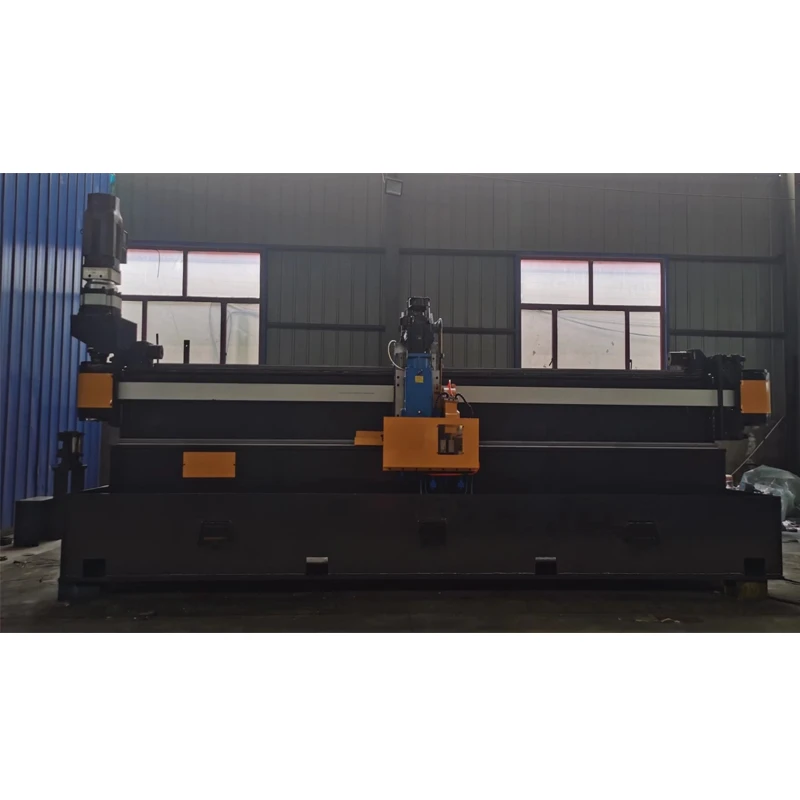On-Site Roll Forming Solutions for Customized Metal Fabrication Needs
On-Site Roll Forming Revolutionizing Metal Fabrication
In the world of manufacturing, efficiency and precision are key. One of the methods that have gained considerable attention in recent years is on-site roll forming. This innovative approach allows for the production of metal profiles at the job site rather than in a factory. As industries continue to evolve, on-site roll forming is becoming an indispensable resource, especially in construction, roofing, and various other applications.
What is Roll Forming?
Roll forming is a continuous process where flat metal strips are fed through a series of rollers that progressively shape the material into a desired profile. This method is widely used for producing parts with uniform cross-sections, such as beams, channels, and other structural components. Traditionally, this process has taken place in a manufacturing facility, but advancements in technology have paved the way for on-site roll forming.
Advantages of On-Site Roll Forming
1. Cost Efficiency One of the most significant advantages of on-site roll forming is the reduction in material waste. When components are manufactured at the job site, there's no need to cut and shape large sheets of metal in advance, which often leads to excessive scraps. Additionally, transporting pre-formed pieces can be costly, particularly for long or bulky items. By producing parts on-site, companies can save on logistics and handling costs.
2. Customization On-site roll forming allows for high levels of customization without the lengthy lead times typically associated with pre-fabricated components. Manufacturers can adjust the production process to meet specific project requirements, accommodating unique designs and specifications. This flexibility is particularly beneficial in construction, where every project can present different challenges.
3. Time Efficiency The ability to produce materials on-site significantly speeds up the construction process. Crews no longer have to wait for pre-manufactured components to arrive, allowing for faster project timelines. Furthermore, as the components are manufactured directly where they are needed, the possibility of delays due to transportation issues is minimized.
4. Quality Control On-site roll forming also enhances quality control. By producing parts as they are needed, companies can ensure that quality checks are integrated into the manufacturing process in real-time. This immediate feedback loop allows for quick adjustments and corrections, resulting in higher-quality finished products.
on site roll forming

5. Reduced Storage Needs With on-site roll forming, the need for large storage areas for pre-fabricated components is eliminated. This benefit is especially relevant in construction sites where space is often limited. Materials can be produced just-in-time, reducing the clutter and enhancing site organization.
Applications of On-Site Roll Forming
On-site roll forming is particularly advantageous in construction and roofing industries. In construction, steel profiles such as studs and tracks can be formed directly on-site to fit specific measurements, reducing the time spent in searching for pre-made options. Roof trusses and metal roofing panels can also be manufactured as needed, ensuring a perfect fit for any building design.
In addition to construction, on-site roll forming is making inroads into automotive manufacturing, HVAC systems, and even specialized projects like sculptures or artistic installations. Its versatility and adaptability make it a valuable asset across various sectors.
The Future of On-Site Roll Forming
As technology continues to advance, on-site roll forming is likely to become even more prevalent. Innovations in mobile roll forming machines are making the process more accessible and efficient. These compact, portable machines are equipped with advanced features that allow for easy setup and operation, making them ideal for a range of job sites.
Moreover, the push towards sustainability in manufacturing practices is driving the adoption of on-site roll forming. Because this method generates less waste and minimizes transportation emissions, it aligns well with the goals of environmentally conscious companies.
Conclusion
On-site roll forming is reshaping the landscape of metal fabrication, offering an array of benefits that address the needs of modern manufacturing. With its cost-effectiveness, customization capabilities, time efficiency, quality control, and reduced storage requirements, it is poised to become a staple in various industries. As we move forward, embracing this innovative approach could lead to even more significant advancements in efficiency and sustainability in manufacturing and construction.
-
High Frequency Straight Seam Welded Pipe Production Line-BzZhou Xinghua Machinery Equipment Manufacturing Co., LTD.|Precision Welding, High EfficiencyNewsJul.30,2025
-
High Frequency Straight Seam Welded Pipe Production Line|BzZhou Xinghua|Precision Welding&EfficiencyNewsJul.30,2025
-
High Frequency Straight Seam Welded Pipe Production Line - BzZhou Xinghua|Precision Engineering&EfficiencyNewsJul.30,2025
-
High-Frequency Straight Seam Welded Pipe Production Line-BzZhou Xinghua Machinery Equipment Manufacturing Co., LTD.NewsJul.30,2025
-
High-Frequency Straight Seam Welded Pipe Production Line-BzZhou Xinghua Machinery Equipment Manufacturing Co., LTD.|Precision Manufacturing, High EfficiencyNewsJul.30,2025
-
High Frequency Straight Seam Welded Pipe Production Line-BzZhou Xinghua Machinery Equipment Manufacturing Co., LTD.|Precision Steel Pipe Manufacturing&Industrial EfficiencyNewsJul.29,2025


